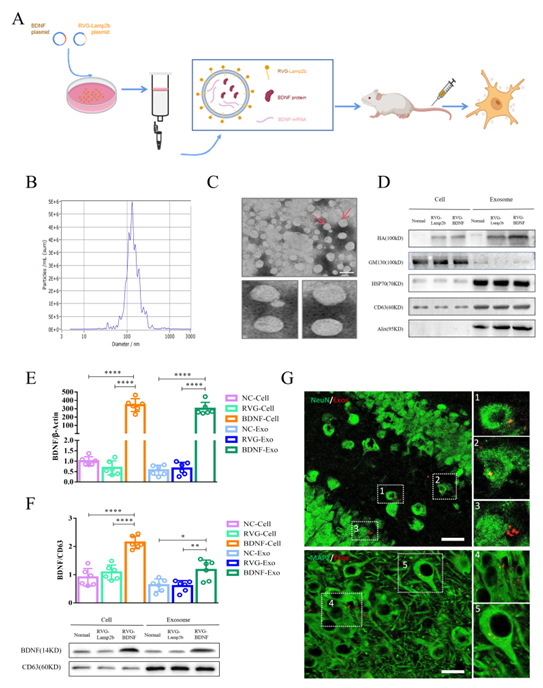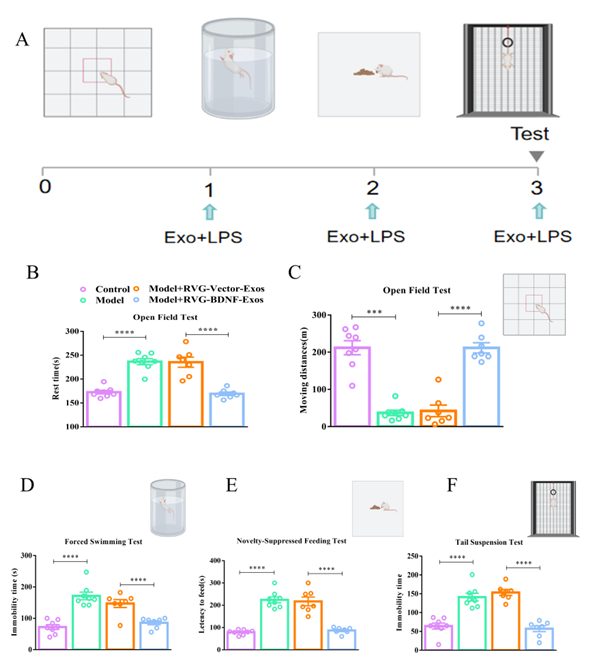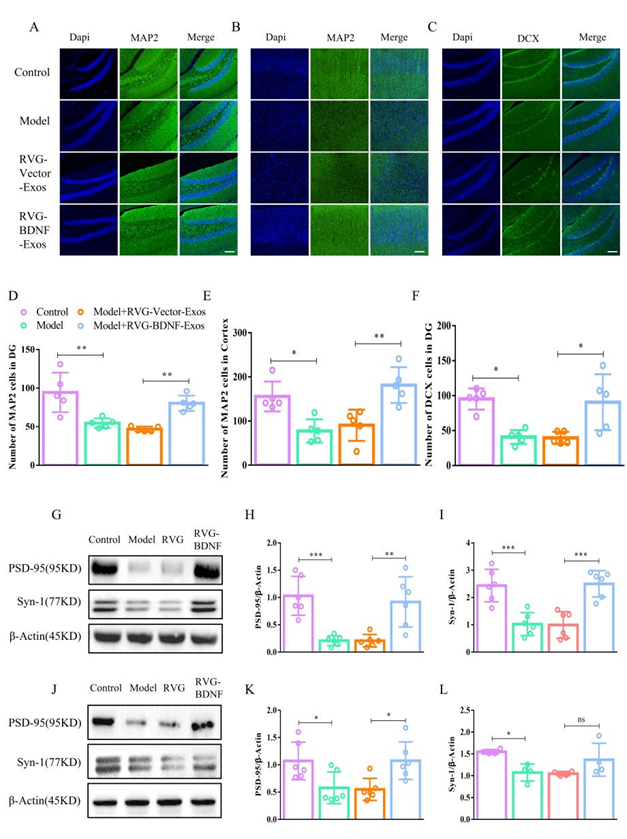Breakthrough-Neurological Diseases
Research Background
Depression is a common and serious mental illness, characterized by persistent low mood, loss of interest and cognitive dysfunction. According to the neurotrophic factor hypothesis, the occurrence of depression is closely related to the level of brain-derived neurotrophic factor (BDNF). BDNF plays a vital role in the development, differentiation and survival of neurons, and plays an important role in neuroplasticity and the pathogenesis of depression. Studies have shown that the expression level of BDNF in the brain of patients with depression is significantly reduced, especially in the prefrontal cortex and hippocampus, which is closely related to the occurrence of depression. In addition, a large number of preclinical studies have shown that BDNF may be an important target for the treatment of depression. In addition, schizophrenia (SCZ) is also a persistent mental disorder, mainly manifested by abnormalities in perception, emotion and behavior, and chaotic thinking and emotional reactions are its typical symptoms1. The disease is characterized by positive symptoms (such as hallucinations, confusion), negative symptoms (such as social withdrawal, apathy) and cognitive impairment (such as executive dysfunction, attention deficit), which has a serious impact on personal health and also brings a huge burden to the medical system. Current treatment methods mainly focus on relieving symptoms, but the improvement of cognitive dysfunction is limited, and new treatment strategies are urgently needed.
Although BDNF is considered an important target for the treatment of depression, its application is limited by the blood-brain barrier (BBB). The blood-brain barrier is a selective permeability barrier that protects the brain from harmful substances, but it also limits the entry of therapeutic drugs, especially macromolecular drugs such as BDNF, into the brain. In addition, how to accurately target BDNF to specific neurons is also a major problem. These factors limit the wide application of BDNF in clinical treatment.
In recent years, exosomes have received widespread attention in the biomedical field as a new type of nanocarrier. Exosomes are secreted by cells with a diameter between 30 and 150 nanometers. They can encapsulate a variety of bioactive components and transmit substances and information between cells. Studies have found that exosomes play an important role in the pathological process of depression and can regulate neuroinflammation and neuroplasticity. More importantly, exosomes can easily pass through the blood-brain barrier from the periphery into the brain. In particular, modified exosomes have strong targeting and can deliver drugs or genetic materials to specific parts or cells in the brain.
What are stem cell exosomes?
Exosomes are nanoscale, spherical, lipid bilayer single membrane extracellular vesicles secreted by stem cells. They carry a variety of bioactive substances, such as proteins, lipids, and RNA, and are therefore considered to be miniature versions of their parent cells.
In other words, stem cell-derived exosomes (SC-Exo) inherit similar therapeutic effects from their parent cells, such as anti-inflammatory, immunomodulatory, and tissue regeneration. And they can act as intercellular messengers to promote intercellular communication and repair damage. In general, stem cell-derived exosomes are an effective alternative to stem cell therapy.
Potential mechanism of exosomes in treating neurological diseases
Common colds are mainly caused by rhinoviruses, coronaviruses, etc., and the symptoms are relatively mild, generally manifested as nasal congestion, runny nose, cough, sore throat, etc. Influenza, on the other hand, is caused by influenza viruses, and the symptoms are more severe, often accompanied by systemic symptoms such as high fever, fatigue, and muscle aches.
① Neuroprotection Stem cell exosomes contain a variety of neuroprotective factors, such as brain-derived neurotrophic factor (BDNF) and nerve growth factor (NGF), which can protect neurons from ischemic damage and reduce neuronal cell death after cerebral infarction;
② Promote neural regeneration Stem cell exosomes can stimulate the growth and differentiation of nerve cells, promote the regeneration and repair of damaged nerves, and help restore brain function; ③ Anti-inflammatory effect Cerebral infarction can trigger an inflammatory response and aggravate brain tissue damage. The anti-inflammatory factors in stem cell exosomes can inhibit the activity of inflammatory cells and reduce the release of inflammatory mediators, thereby reducing the inflammatory response of brain tissue.
④ Improve microcirculation After cerebral infarction, damaged blood vessels will affect the blood circulation in the brain. Stem cell exosomes can promote angiogenesis and remodeling, improve brain microcirculation, and provide sufficient oxygen and nutrition for damaged brain tissue.
Latest progress abroad
Japanese scholars have found that intranasal exosome administration can greatly reduce hypoxic-ischemic brain damage and intervene in depression
The "Pharmaceutics" magazine published a report that researchers from the Department of Neurosurgery at the Graduate School of Medicine, Hokkaido University, Japan, conducted a preclinical study on the mechanism of action of nasal exosome administration.
This study showed that through nasal exosome administration, tiny exosome messengers can enter the brain in a very short time and successfully reduce microglial inflammation and neural damage, thereby restoring cognitive function.
Domestic research progress
The research team of Professor Cheng Yong, one of the chief expert team of Herun Medical, developed a targeted exosome that can efficiently deliver the BDNF gene through genetic engineering technology. Specifically, the neuron-specific rabies virus glycoprotein (RVG) and the BDNF gene were combined and introduced into 293T cells. These cells then produced engineered exosomes (RVG-BDNF-Exos) containing the BDNF gene, which can specifically target neurons.
To verify the characteristics of these engineered exosomes, the researchers used nanoparticle tracking analysis, electron microscopy, qRT-PCR and Western blot techniques. The results showed that the diameter of the exosomes was about 131 nanometers and the target protein was successfully integrated. In addition, the research team injected the labeled exosomes into mice through tail vein injection and found that these exosomes could effectively target neurons in the mouse brain, proving their targeting effect in vivo.

To evaluate the effect of RVG-BDNF-Exos in delivering BDNF in the brain, the researchers conducted experiments using mice with depressive-like behavior. The results showed that mice treated with RVG-BDNF-Exos had significantly increased BDNF protein levels in the hippocampus and prefrontal cortex regions, activated downstream signaling pathways, and reduced inflammatory responses, proving that engineered exosomes activated the BDNF signaling pathway in vivo.
In a series of behavioral tests, mice treated with RVG-BDNF-Exos showed significant improvement in depressive symptoms. For example, in the open field test, the immobility time of mice was significantly reduced; in the forced swimming test and tail suspension test, the immobility time of mice was also significantly shortened; in the novel food inhibition test, the latency of mice to eat in a new environment was significantly shortened. These results show that RVG-BDNF-Exos can significantly improve depressive-like behavior.

Further studies have found that RVG-BDNF-Exos can not only reduce the number of microglia in the brains of mice with depressive-like behavior and alleviate neuroinflammation, but also significantly reduce the number of astrocytes. These results further indicate that it has significant therapeutic potential for depression.
In addition, RVG-BDNF-Exos treatment significantly increased the number of mature neurons in the hippocampus and prefrontal cortex of mice and increased the expression of DCX, a marker of neurogenesis. In terms of synaptic plasticity, the study found that RVG-BDNF-Exos could significantly increase the expression levels of synaptic-related proteins PSD95 and Syn-1 in the hippocampus and prefrontal cortex. These results suggest that RVG-BDNF-Exos may enhance the therapeutic effect of depression by promoting neurogenesis and regulating synaptic plasticity.

Looking to the future
This study not only provides a new strategy for the treatment of depression, but also opens up a new path for gene therapy of neurological diseases. In recent years, the clinical application research of stem cell exosomes for ischemic and hemorrhagic brain damage has experienced rapid development, providing new ideas for the clinical treatment of cerebral infarction, with broad application prospects and huge research value.
At present, under the leadership of Professor Cheng Yong, Chief Medical Officer of Herun, we are focusing on the research on the incidence of major mental illnesses such as depression. By screening related neurotrophic substances against neuropsychiatric diseases in animal and cell models, and combining traditional Chinese medicine, we strive to provide new research directions for the treatment of depression and the development of new drugs.






